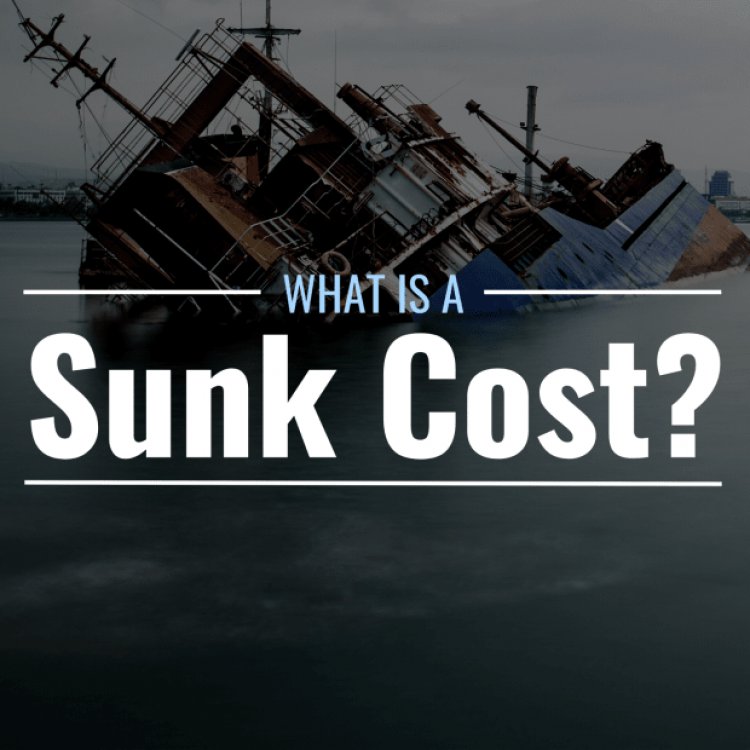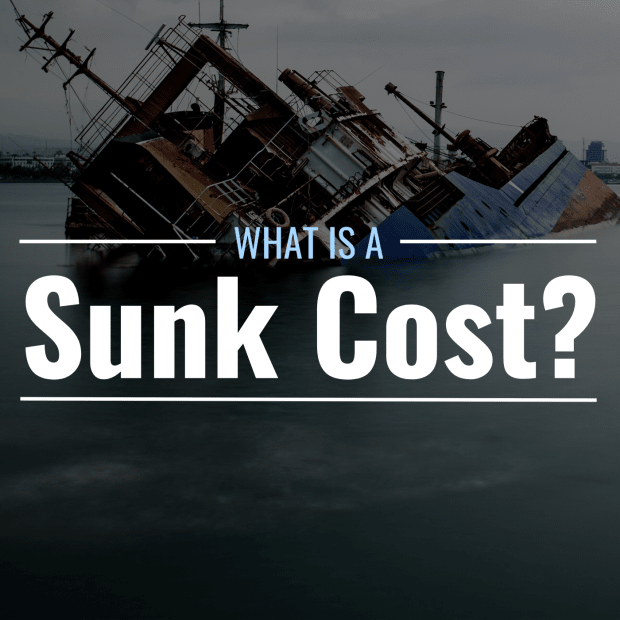What Is a Sunk Cost? Definition, Examples & Fallacy
Sunk costs are bound to happen, and while you should know how to avoid them when possible, it's equally if not more important to understand how to prepare for them and possibly even budget around them. When dealing with a sunk cost, you need to recognize it and analyze what to do next. Here ...


Sunk costs are bound to happen, and while you should know how to avoid them when possible, it's equally if not more important to understand how to prepare for them and possibly even budget around them.
When dealing with a sunk cost, you need to recognize it and analyze what to do next. Here are what a sunk cost is and what the sunk cost fallacy is.
What Is a Sunk Cost?
A sunk cost is a cost that has already been paid for and cannot be recovered in any way.
Because these costs cannot be retrieved, they should not factor at all into future financial decisions. The money has been spent and is a non-factor in your next budget. Similarly, if your business is failing and your only option is to shut it down, you're cutting your losses. Saving money in the event of a sunk cost doesn't mean getting any of that money back, but it can mean avoiding losing additional money.
While everything about a company can be a sunk cost, looking at the specifics within that can be helpful. For example, a piece of equipment has sunken costs to it. When it's time to replace a particular equipment with a newer model, you may be able to sell some of the parts for money and you may be able to reuse other parts. But you won't be getting back anything close to what you initially paid for it.
Such asset depreciation—as well as amortization and impairment—represent sunk cost.
Examples of Sunk Cost
A sunk cost can be as negative as the phrase sounds, but not always. Sometimes it's just a payment you know won't be getting refunded. In a business, the salary you pay your workers can be a sunk cost. You pay it without any expectation of having that money returned to you.
Here are some other examples that illustrate sunk costs in business:
- A movie studio spends $50 million on making a movie and an additional $20 million on advertising. But the film disappoints at the box office and grosses just $15 million. Any of that budget that isn't getting recouped is a sunk cost, and the possibility of it not getting recouped should be factored into other film production budgets even before it becomes one.
- A restaurateur is considering expanding his restaurant into a chain. They spend $10,000 on market research, and using that research determine that opening a new location in a specific area isn't likely to be profitable. They don't move forward with the expansion, and that $10,000 is a sunk cost.
- A company purchases a new forklift for its warehouse for $15,000. Parts of the old forklift, which initially cost $10,000, can be scrapped and sold for $2,000. The other $8,000 is a sunk cost.
A recurring theme with all of these sunk costs is inevitability. Businesses have to update their equipment. They have to spend on research and advertising whetherthe product succeeds or fails. It's an important thing to remember: Even successful businesses have sunken costs.
Sunk costs can also show up in your personal life. If you buy a concert ticket for $30 but realize you can't attend and can't resell it, that $30 is gone, a complete sunk cost. Once you pay your landlord rent, that rent payment is a sunk cost as opposed to a security deposit, which you expect to get recouped after your lease.
Once again, even in your personal life many sunk costs are inevitable and not just a bad decision.
What Is a Sunk Cost Fallacy?
Sunk cost is most commonly associated with the sunk cost fallacy. This is when a person or company sticks with a decision because they've already put the money down for it and want to make sure it isn't lost.
The sunk cost fallacy can affect even the smallest financial decision. Let's return to the concert ticket example. Maybe a college student bought the ticket long in advance but realized too late that they have an exam the next morning, and need to spend that night studying and getting rest. But $30 is a lot of money for a broke college student, so they decide to get their money's worth and attend the concert anyway.
That is the sunk cost fallacy at work. Regardless of whether going to the concert, the $30 isn't getting recouped. It doesn't actually play a role in the college student's decision.
This fallacy can play out in business often. If market research for a film suggests it won't be too popular or have that wide an audience, the studio might pour even more money into advertising in an attempt to raise awareness of it and avoid losses. What it's likely to do, though, is create even more losses.
Sunk Cost Dilemma
The sunk cost dilemma is basically what you go through before avoiding or falling prey to the sunk cost fallacy. The dilemma is determining whether you are better off cutting your losses on the cost or going forward with it to try and save the loss.
As an example, let's say you bought new paint for the walls in your house. You thought it would look good, but after painting two rooms with it you've decided it's not what you wanted in your house. But you've already spent money on paint, and you already started painting the house. Now you've wound up in the sunk cost dilemma. Do you buy a new color of paint that's more to your liking, or do you stick with it and paint the rest of your house this color?
Give your dilemma careful consideration, especially since many of these dilemmas involve far more money than just a few paint cans' worth. Sunk costs are going to happen once in a while. Financial responsibility isn't about completely avoiding them, but knowing how to mitigate the damage. Budgeting for them in advance when you can (rent in the case of personal finance, salaries and benefits in the case of businesses, etc.) is important. When it's a less foreseeable sunk cost, you're going to need to do a full analysis to figure out if it's better to stick with it or cut your losses now.
What's Your Reaction?



























































